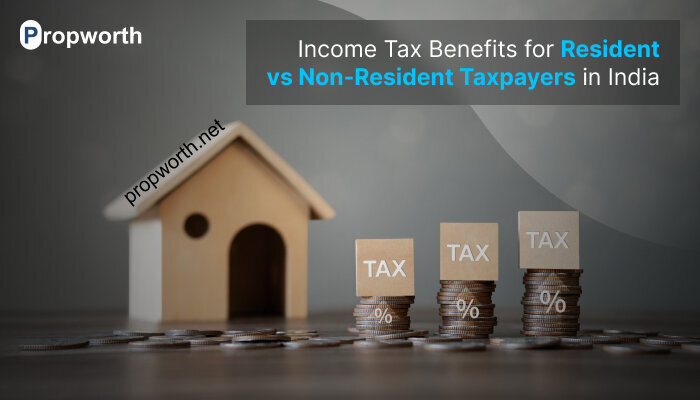Personal loans are a popular financial tool for many individuals. Whether you’re looking to consolidate debt, finance a home renovation, or cover unexpected expenses, personal loans offer flexibility. One of the most crucial aspects of a personal loan is the interest rate because it directly affects the total cost of borrowing. The lower the interest rate, the less you pay over the life of the loan. This article aims to provide key tips to help you secure a personal loan at the lowest possible interest rate.
1. Check Your Credit Score
Your credit score plays a crucial role in determining the interest rate you receive from lenders. A higher credit score indicates to lenders that you are a low-risk borrower, which can lead to lower interest rates. Before applying for a personal loan, check your credit report for errors and take steps to improve your score if necessary. This could include paying down debt, correcting inaccuracies on your report, and ensuring you have a mix of credit types.
2. Compare Lenders
Not all lenders offer the same interest rates. Shopping around and comparing interest rates from various lenders can help you find the best deal. Don’t just look at the interest rate; consider other factors such as fees, repayment terms, and the lender’s reputation. Personal loans are available from a variety of sources, including online lenders, credit unions, and traditional banks. Each option comes with its own unique benefits and drawbacks.
3. Improve Your Debt-to-Income Ratio
Lenders look at your debt-to-income (DTI) ratio to assess your ability to manage monthly payments and repay debts. A lower DTI ratio indicates to lenders that you have a good balance between debt and income. To improve your DTI ratio, focus on paying down existing debt and consider increasing your income through side jobs or selling unused items. A lower DTI can lead to more favorable loan terms, including lower interest rates.
4. Consider a Co-signer or Guarantor
If you have a low credit score or a high DTI ratio, adding a co-signer or guarantor to your loan application can improve your chances of getting a lower interest rate. A co-signer or guarantor essentially vouches for you, agreeing to take on the debt if you cannot pay it. This reduces the risk for the lender, potentially leading to a lower interest rate.
5. Consider a Secured Loan
Secured loans require collateral, such as a savings account, certificate of deposit, or a vehicle. Since the lender has the right to seize the collateral if you default on the loan, the risk for the lender is lower. This can lead to lower interest rates compared to unsecured loans. However, it’s important to remember that if you cannot repay the loan, you risk losing the collateral.
6. Negotiate with Your Lender
Don’t be afraid to negotiate with your lender. If you have a good relationship with your bank or credit union, they may be willing to offer you a lower interest rate, especially if you have a strong credit history with them. Be prepared to discuss your financial situation, credit score, and why you believe you deserve a lower rate.
7. Increase Your Income or Reduce Your Expenses
Lenders prefer borrowers who have a stable income and manageable expenses. Increasing your income through a side job or reducing your expenses can improve your financial health, making you a more attractive borrower. This might not directly lower your interest rate, but it can improve your overall loan terms and help you secure a loan more easily.
8. Pay More Than the Minimum
If you already have a personal loan or are considering one, paying more than the minimum monthly payment can reduce the total interest you pay over the life of the loan. This can be a good strategy if you receive a windfall, such as a tax refund or bonus, or if you have extra disposable income.
9. Avoid Taking Multiple Loans
Applying for multiple loans in a short period can hurt your credit score and signal to lenders that you’re a higher risk. Before applying for a personal loan, carefully consider whether it’s the best option for your financial situation. If possible, wait to apply until you’ve improved your credit score or DTI ratio.
10. Look for Promotional Rates
Some lenders offer promotional interest rates for new customers or for specific loan purposes. These rates can be significantly lower than standard rates and can save you a substantial amount of money over the life of the loan. However, it’s important to read the fine print, as these rates may only apply for a short period or come with specific conditions.
11. Consider the Loan Term
While a longer loan term may result in lower monthly payments, it can also lead to higher interest charges over the life of the loan. Conversely, a shorter loan term means higher monthly payments but less interest over time. Depending on your financial situation, choosing a shorter loan term could help you secure a lower interest rate and save money in the long run.
12. Use a Loan Comparison Tool
Online loan comparison tools can help you quickly compare interest rates, fees, and terms from multiple lenders. These tools can save you time and help you identify the best loan options based on your financial profile. Be sure to use reputable comparison sites and read reviews to ensure the accuracy of the information.
13. Improve Your Financial Health
In addition to checking your credit score and improving your debt-to-income ratio, taking other steps to improve your financial health can make you a more attractive borrower. This can include saving more money, reducing your debt levels, and maintaining a stable income. Lenders are more likely to offer lower interest rates to borrowers who demonstrate financial responsibility.
14. Be Prepared to Provide Documentation
Lenders will typically require documentation to verify your income, employment status, and financial stability. Being prepared with this documentation in advance can streamline the loan application process and improve your chances of approval. Documents may include pay stubs, tax returns, bank statements, and proof of identity.
15. Consider the Impact of Inflation
Inflation can affect interest rates over time. If you’re planning to take out a personal loan, consider the current inflation rate and how it may impact the cost of borrowing. While you may not be able to control inflation, being aware of its potential impact can help you make more informed financial decisions.
16. Avoid Payday Loans
Payday loans often come with extremely high interest rates and fees, making them a costly option for borrowing money. If you’re considering a payday loan, explore other options first, such as personal loans from traditional lenders or credit unions. Payday loans should only be used as a last resort.
17. Explore Alternative Lenders
In addition to traditional banks and credit unions, consider exploring alternative lenders such as online lending platforms and peer-to-peer lending networks. These lenders may offer more competitive interest rates and flexible repayment terms, especially for borrowers with less-than-perfect credit.
18. Read Reviews and Check Ratings
Before choosing a lender, read reviews and check ratings from other borrowers to get a sense of their experience. Look for feedback on the application process, customer service, and the overall loan experience. This can help you avoid lenders with a history of poor customer service or predatory lending practices.
Conclusion
In conclusion, securing a personal loan at the lowest possible interest rate requires careful planning and strategic action. By improving your credit score, comparing lenders, considering alternative financing options, and carefully managing your financial health, you can increase your chances of obtaining a favorable loan term. Additionally, being informed about the loan process, understanding the terms and conditions, and negotiating with lenders can further enhance your ability to secure a loan with the lowest interest rate. Remember, the key is to present yourself as a low-risk borrower to lenders, demonstrating your financial responsibility and stability. With these strategies in mind, you’ll be well-equipped to navigate the personal loan landscape and find the best financing option for your needs.










